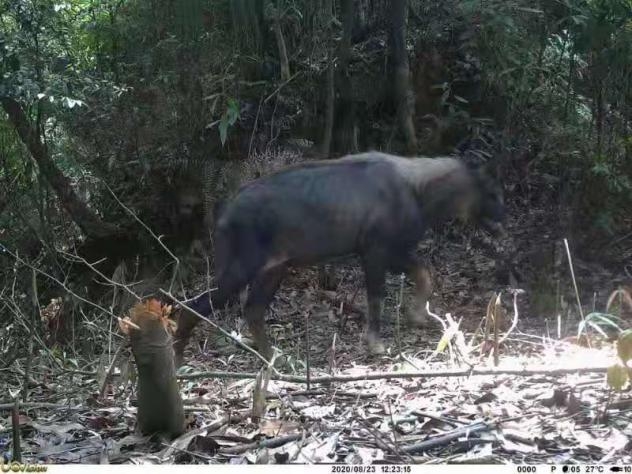Chinese Capricornis Milneedwardsii Found in Mangshan National Nature Reserve

Recently, Zongshuba Protection Station of Mangshan National Nature Reserve has photographed rare Chinese Capricornis Milneedwardsii in infrared camera monitoring data recover.
It was understood that the Chinese Capricornis Milneedwardsii is an animal belonging to the family Bovidae and the genus hyenae. The head is 140-170 cm long, the shoulder is 90-100 cm high, the tail is 115-160 mm long, and the body weight is 85-140 kg. The body is high, the legs are long, the color of the hair is deep, and it has a short angle bending backward. There is a long and fluffy mane on the back of the neck, forming a thick ridge extending to the back. Its horn is like a deer, hoof like an ox, head like a sheep and tail like an ass, so it is also called "four unlike". It is mainly distributed in mixed coniferous and broad-leaved forest, coniferous forest or rocky mixed shrub forest with an altitude of 1000-4400m. They usually appear in the forest zone in winter and migrate to high-altitude cliff areas in summer. Living alone or in a small group, they are active in the morning and dusk, quick in action and quick in running among the rocks. It is mainly distributed in Cambodia, China, Laos, Myanmar, Thailand and Vietnam.

Over the years, the Mangshan National Nature Reserve Administration, guided by Xi Jinping's ecological civilization, has implemented the concept of "Lucid waters and lush mountains are invaluable assets." It has persisted in the coordination of ecological environment protection and economic and social development, made active exploration and practice in the aspects of ecological restoration, wildlife monitoring, and so on, so as to provide basis for the improvement of protection measures and management and make the nature reserve. The forest ecological environment has been effectively protected, the biodiversity has been improved and restored, the ecological benefits have been significantly improved, and it has become a gene pool of animals and plants in southern China.




